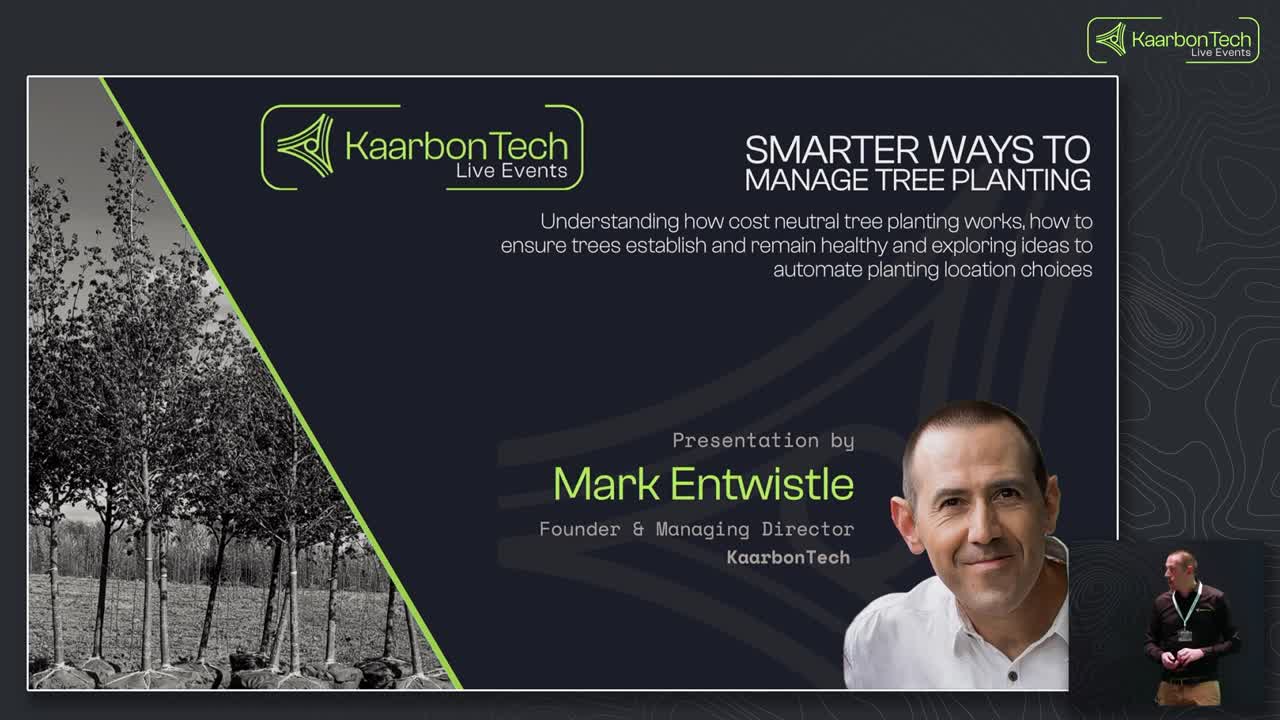The more information you have, the better informed your decisions will be, hopefully leading to the best outcome. At our Tree SMART Live event earlier this year, KaarbonTech MD, Mark Entwistle, looked at how collecting, collating and combining a variety of data can help to plan thriving urban forests through successful tree planting programmes.

The problem with different approaches
Politicians may love to make great statements, however sometimes the realities for local authorities on the ground are very different. Some are proactive, some reactive, and some have limited budgets with which to work, making it crucial that meticulous care is taken when planning the use of money. With tree planting programmes, it’s easy to make sweeping commitments, maybe to “Plant a million trees!”, however it’s essential that every single tree is planned carefully, with location, species and cost in mind for a successful outcome and a healthy tree that thrives for many years to come.
Using data for successful trees
As we looked at in a previous article, The Benefits of Trees to the Highway Sector, the benefits of urban forests to roads, towns and cities is immense. Therefore local authorities are keen to plant trees that help alleviate flooding, reduce noise and pollution, provide shade and ultimately, are successful, so there’s no risk of decay and therefore damage through falling. Here at KaarbonTech, we’ve looked at the relationship between these aspects and can use technology and data to link them to ensure the most appropriate trees are planted in the best places, giving them the greatest chance for success.
Work carried out by the Trees and Design Action Group (TDAG) looked at tree species selection, helping us understand the best tree species for various uses – transport corridors, paved areas, around sustainable drainage systems (SUDS), parks, coastal areas and small gardens. This is incredibly useful for local authorities who manage a variety of spaces, as behind this research lies a database which we can link to road, rail, verge and green space data. Combining datasets allows us to also view buildings, look at urban density and more, to gain an insight to the defined area and from there, make better judgements on the best planting programme.
Local authorities hold a wealth of unused data in their archives. They know where priority roads, footpaths and car parks are, as well as traffic flow data and traffic counts. They also understand areas that are politically sensitive, or where there are a high number of complaints made. Bringing in all that data and relating it to each other continues to build a comprehensive picture of the area.
Another great source is the Environment Agency who hold surface water flood zones and canopy and tree locator data as well as rainfall and live and historic data. This open-source data can be uploaded to the same system to provide another cache of information.
The British Geological Survey looks at soil types alongside different risk factors such as subsidence. This data can help to understand the best locations for planting, according to species.
Choosing tree type and location
Combining all this data provides an incredible bank of information from which to start making decisions on which species will thrive in particular locations. CO2 benefits can also be defined by species, potentially opening the door for increased budgets for tree planting as part of a sustainability agenda. This platform could also be used to manage public sponsorship and provide a streamlined process from request to approval to action. With all the data held within the system, it makes the process smoother and more efficient. It also provides the ability to measure the success of tree planting, with high visibility of new tree locations and a clear view of where money has been spent. This also gives evidence to filter to the press who may be interested in the cost and success rate of tree planting programmes.
Our Tree SMART solution provides the perfect platform for collating and analysing this data in order to use it for informing an efficient and effective tree planting programme. This ensures that you create an urban forest that is suitable, taking into account all data available, and one that will thrive well into the future.
See more about Tree SMART here.

